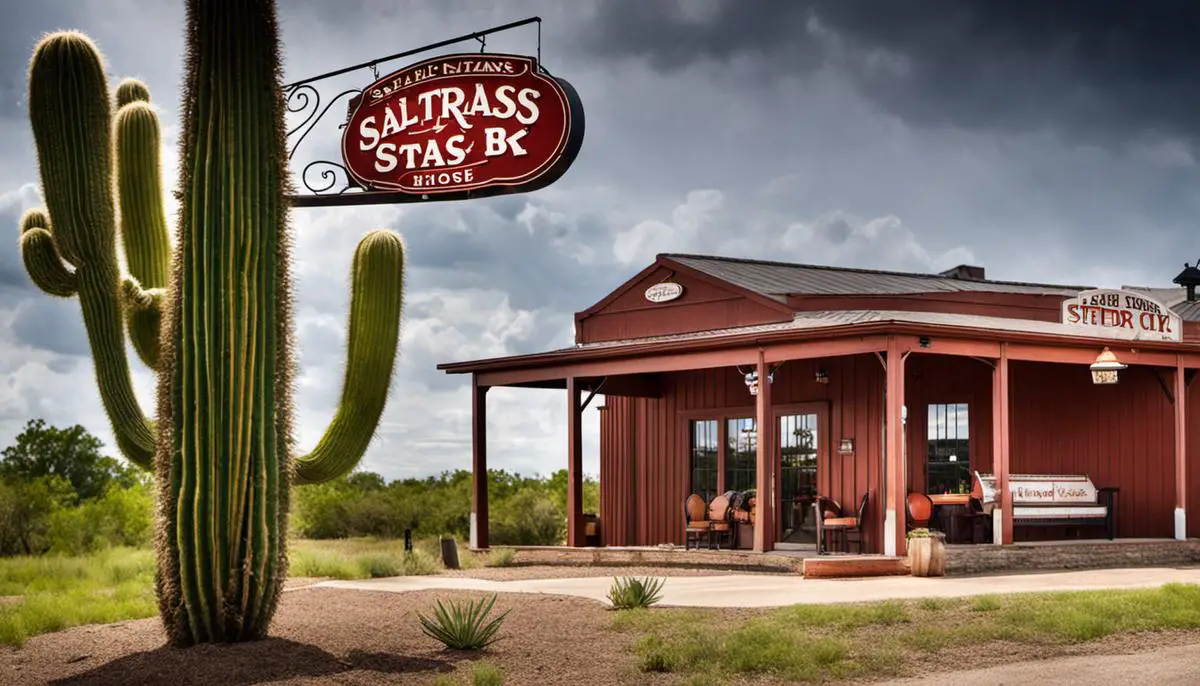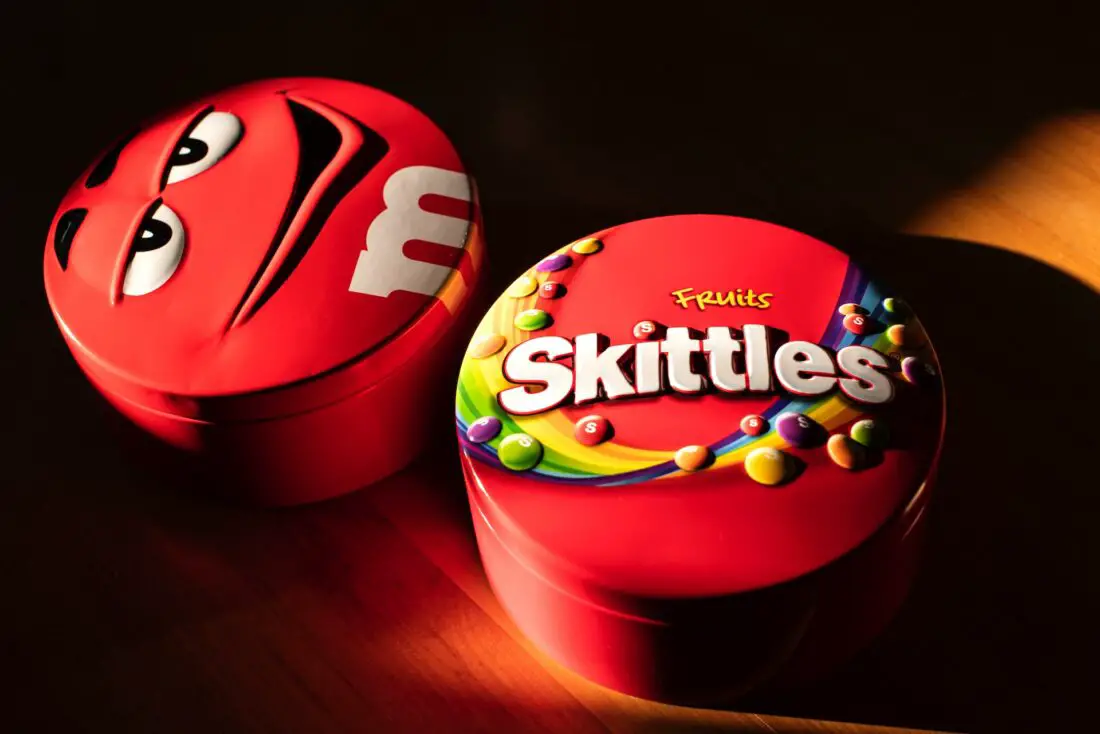The vibrant tapestry of American culinary culture would be incomplete without acknowledging the significant influence of Mexican cuisine, particularly through the growth of American-Mexican fast food chains. This dynamic fusion, rich with history and flavor, has shifted American dietary habits while simultaneously creating a unique fast-food genre.
The Popularity of Cheap Tex-Mex Fast Food
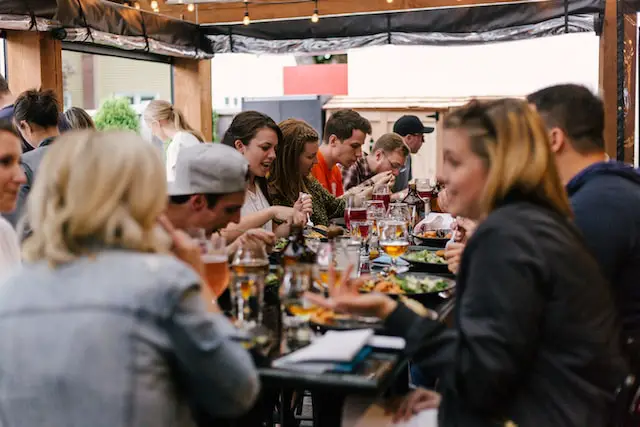
One of the most recognizable symbols of culinary globalism, these food chains gave rise to brand giants like Taco Bell and Chipotle, whose growth and influence resonate across the American landscape. As we explore the inception and evolution of these fast-food enterprises, we will also delve into their popular menu offerings, replete with Americanized takes on traditional Mexican dishes. Beyond the culinary, understanding these chains’ business models and marketing strategies further explains their widespread success. At the same time, an assessment of health and nutritional considerations elucidates what these fast-food choices mean for Americans at large.
Historical Background of American-Mexican Fast Food Chain

Origins of American-Mexican Fast Food Chains
The emergence of American-Mexican fast food chains dates back to the 20th century with the introduction and spread of Mexican cuisine owing to the influence of Mexican immigrants to the United States. The immigrants brought their culinary traditions with them and gradually, as their population grew, so did the popularity of their cuisine across the United States. Initially, dishes like tacos, enchiladas, and burritos found their way into the American diet through small local eateries run by Mexican immigrant families.
Popularization and Growth
The popularization and growth of these chains can be attributed to national brands like Taco Bell and Chipotle. In 1962, Glen Bell started the first Taco Bell restaurant in California, offering his unique interpretation of Mexican food. By the 1980s, the Taco Bell brand had expanded nationwide, introducing millions of consumers to a menu of hard shells with ground beef, cheese, and lettuce, which became the American idea of a taco.
Similarly, another major player, Chipotle Mexican Grill, started in the early 1990s in Denver, Colorado, became immensely popular for their concept of customizable burritos. Chipotle emphasized high-quality ingredients, an interactive service format, and a distinctive restaurant design, which distinguished it from traditional fast-food restaurants.
Influence on American Dietary Habits
Mexican cuisine’s influence on American dietary habits through these fast-food chains is profound. Tacos, for instance, have gone through the “Tex-Mex” makeover in these fast food chains. These modified versions adapted to suit the American palate have ingredients like ground beef, tomatoes, lettuce, and shredded cheese – a stark deviation from traditional Mexican tacos.
The same can be said of dishes like nachos, burritos, and enchiladas, which have also been altered to accommodate American tastes. Despite their divergence from the original Mexican recipes, these fast food chains have succeeded in introducing and popularizing Mexican flavors in the United States, if not the authentic dishes.
Adaptation and Evolution
American-Mexican fast food chains have evolved over the years, increasingly incorporating fresh and healthy ingredients in response to a growing industry-wide trend toward healthier fast food options. This has resulted in the introduction of new menu items like salads, bowls, and other low-calorie options.
Moreover, there has been a shift towards locally sourced and sustainable ingredients. This shift is part of an increasing consumer demand for transparency, environmental consciousness, and a growing move towards better healthy eating habits.
The Penetration and Influence of American-Mexican Fast Food Chains
America’s fast food landscape has heavily evolved due to the infiltration and contribution of American-Mexican fast food chains such as Taco Bell and Chipotle, which operate several thousands of outlets across the nation. These chains have not only played a significant role in providing numerous employment opportunities and bolstering the economy but have also facilitated a cultural exchange by mainstreaming the Mexican cuisine and cultural norms into the broader U.S. society.
Typical Menu Items
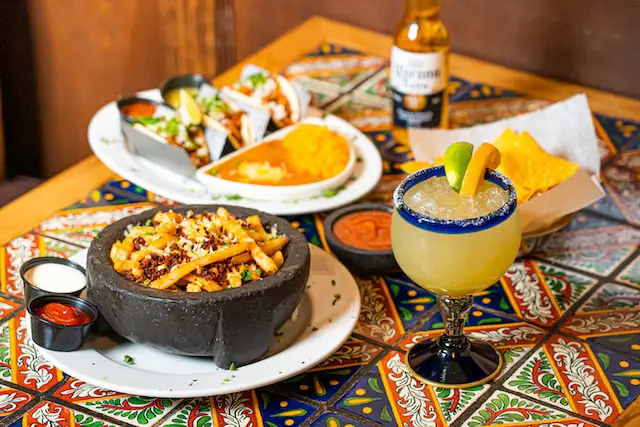
Unfolding the Menu at American-Mexican Fast Food Chains
Tacos have cemented their spot as one of the quintessential items on the menu of American-Mexican fast food chains. They typically come in soft or hard tortilla shells and are stuffed with a diverse range of fillings, ranging from seasoned ground beef, lettuce, tomatoes, to a beautiful spread of shredded cheese, and a topping of sour cream. Certain chains also feature deluxe taco options that offer a more gourmet experience with ingredients like shrimp, grilled chicken or steak, and enriched with exquisite toppings like avocado and cilantro lime rice.
Equally popular is the burrito, another iconic dish that provides a fulfilling meal with a generous assortment of fillings enveloped in a large tortilla. A customary burrito features refried beans, Mexican-style rice, seasoned meat (options include chicken, beef, and pork), a collection of salsas, and a sprinkle of shredded cheese. It may also be enhanced with the likes of sour cream, guacamole, lettuce or corn. In an endeavor to infuse an American twist, several chains introduce components like fries, BBQ sauce, or bacon.
Hand in hand with the burrito is its mini version, often called a taquito or rolled taco. They essentially are bite-sized corn tortillas tightly filled with meat or cheese and deep-fried to achieve the perfect crunch. They’re generally paired with a side of dips such as guacamole, salsa, or sour cream.
American Twists to Traditional Mexican Dishes
The Mexican cuisine served in American fast food chains often incorporates American elements and adapts traditional recipes to cater to a broader audience. This fusion can be seen distinctly in dishes like the ‘Mexican Pizza’, which, despite its name, bears little resemblance to a traditional Mexican dish. It’s usually a layered tortilla dish with refried beans, seasoned meat, cheese, tomatoes, and is baked to crispy perfection.
Another creation that reflects the American influence on Mexican fast food is the ‘Crunchwrap’. This is a dish where a large flour tortilla is filled with seasoned beef, nacho cheese, a crunchy tostada shell, sour cream, lettuce, and tomatoes, then folded into a neat hexagonal packet and grilled.
Lastly, churros, though a traditional Spanish and Mexican dessert, have found their popularity in American Mexican fast food chains. They are often served dusted with cinnamon sugar and can come with various dipping sauces like chocolate or caramel, appealing to the American partiality for sweet endings.
Introduction
American-style Mexican fast food chains offer unique menus interweaving the traditional charm of Mexican cuisine with an unmistakable twist of American flair. This fusion ensures a distinctive and savory dining experience.
Business Model and Marketing Strategies
Understanding the American-style Mexican Fast Food Landscape Through Their Business Strategy
At the core of many eminent American-style Mexican fast food chains like Taco Bell, Chipotle, and Del Taco is the franchise model. The franchise strategy is a form of business licensing that permits independent businesspersons to utilize the corporation’s established and popular business model, name, logo, and trademark for a specified fee and continuous royalties. This policy has been instrumental in their swift nationwide and global proliferation, concurrently reducing the hazard and expenditure associated with opening and administering new establishments.
Marketing Strategies: Target Audience and Advertising Techniques
American-style Mexican fast food chains target a broad audience, from teens to adults, making their offerings fun, quick, and relatable. Advertisements are typically centered on the fast, convenience, value for money, and tastiness of their products. Online and digital advertising, social media marketing, and celebrity endorsements are major components of their promotional strategies.
For example, Taco Bell is known for its humorous and culturally relevant social media campaigns, targeting a younger demographic. On the other hand, Chipotle aims for a more health-conscious audience, emphasizing fresh ingredients and customization in its marketing materials.
Another common marketing strategy is product innovation and limited-time offers. Chains introduce new or improved food items regularly to keep their menu exciting and attract consumers back.
Innovation Strategies: Embracing Trends and Technology
Major chains like Chipotle and Taco Bell have embraced technology and adjustable menu options to cater to emerging trends and lifestyles, including vegetarianism and gluten-free diets. This flexibility has become one of their main selling points.
Many chains have also invested in digital improvements such as mobile apps, online ordering, and delivery partnerships, which not only provide a more convenient and personalized experience for customers but also capture valuable data for future marketing and development strategies.
Corporate Social Responsibility: Sustainability and Community Service Efforts
American-style Mexican fast food chains also dedicate efforts towards sustainability and community services as part of their corporate social responsibility.
These fast food chains attempt to source ingredients from local suppliers whenever possible to support local economies and reduce shipping emissions. Many chains are also making strides towards reducing their environmental impact through sustainable packaging, waste management, and energy-efficient practices.
When it comes to community service, these include contributions to local charities, educational programs, and philanthropic initiatives. For instance, Taco Bell’s “Live Más Scholarship” seeks to empower and educate young people, highlighting their commitment towards positive community development.
When analyzing the popularity of American-Mexican fast food chains, we have to consider a variety of factors. These businesses have been successful through effective franchising systems, sculpted advertising campaigns, intelligent use of technology, and a firm commitment to uphold corporate social responsibility. Through these means, they’ve managed to spread their reach across the nation, making an impact in every corner of the food industry.
Health and Nutritional Considerations

Nutritional Aspects to Consider
Despite their popularity, it’s necessary to understand the nutritional implications of indulging in American-Mexican fast food. It’s not uncommon for a single meal from these chains to account for more than half of an adult’s recommended daily calorie intake. This often includes high amounts of saturated fats, sodium, and sugar. For instance, a typical beef burrito with rice, beans, cheese, and guacamole can clock in at over 1000 calories, which is approximately half the advised daily amount for an average adult. The common accompaniments such as chips with queso or loaded nachos, can add another significant calorie count to the meal, somewhere in the range of 800 to 1000 calories.
Portion Sizes
One of the key aspects contributing to these high caloric numbers is the large portion sizes often seen in American-style Mexican fast-food chains. Burritos, tacos, quesadillas, and nachos are often loaded with an abundance of fillings, making them significantly larger and heavier than traditional Mexican food. Additionally, ‘combo’ meals or deals often encourage consumers to purchase extra items like drinks and desserts, further increasing their caloric intake.
Dietary Restrictions and Trends
For individuals following specific dietary restrictions or trends, like vegetarianism, veganism or gluten-free diets, it can sometimes be challenging to find suitable options without cross-contamination at American-Mexican fast food chains, though many chains are starting to adapt. While most restaurants offer veggie-filled options for vegetarians and vegans, there is often a risk of cross-contamination from shared cooking surfaces or utensils. Gluten-free diners must be cautious, as many dishes may contain hidden gluten in sauces or marinades or risk cross-contamination from shared preparation areas.
Approaches to Healthier Eating
However, there are ways to make healthier choices at American-Mexican fast food chains. Opting for bowls instead of burritos can cut out the calorie-dense tortilla. Selecting grilled proteins or loading up on veggies instead of extra cheese and sour cream can make the calorie count more reasonable. Furthermore, asking for dressings and sauces on the side allows for portion control of these often high-sugar and high-fat additions.
Nutritional Implication
Regular consumption of high-calorie, sodium, and saturated-fat meals, like those commonly found in American-Mexican fast food, can lead to various health conditions such as cardiovascular diseases, obesity, and diabetes. While an occasional indulgence is not likely to cause harm, it is key to consider these implications when making these foods a significant part of one’s diet. It’s important to remember that moderation and balance are essential elements of a healthy diet.

The fusion of American and Mexican culinary traditions through fast-food has become an integral part of American society, offering both convenience and a multicultural dining experience. However, regular consumption of these meals requires a clear understanding of the health and nutritional implications. Amidst the delightful crunch of tacos and the satisfaction of a well-made burrito lies the reality of calorie counts, nutritional values, and portion sizes. Moreover, the growing trend towards specific dietary needs and restrictions, such as vegetarianism, veganism, and gluten-free diets, necessitates adapting from these food chains.
However, whether it’s through the tantalizing flavors of Americanized Mexican dishes, the dynamic marketing strategies, or impactful community service efforts, these American-Mexican fast food chains have engraved their image into the very fabric of American culture. Their story is not just one of successful business ventures but also a depiction of the cultural exchange and assimilation that is fostered in the ‘melting pot’ of the United States.
FAQ About Mexican Food In The US
What are some popular American-Mexican Fast Food Chains?
Taco Bell, Del Taco, and Chipotle are three of the most recognizable American-Mexican Fast Food Chains.
How have these chains influenced American dietary habits?
They have introduced and popularized Mexican flavors, adapting them to suit the American palate.
What are some typical menu items at these chains?
Tacos, burritos, and nachos are common items, often with American twists like added fries or BBQ sauce.
Final Thoughts About American-Mexican Fast Food Chains
The growth and influence of American-Mexican Fast Food Chains have left an indelible mark on the American culinary landscape. From introducing new flavors to adapting traditional Mexican dishes, these chains continue to evolve. The journey through these fast-food giants offers a fascinating glimpse into culinary globalism and the ever-changing tastes of America.

